When last we checked in with my portulacaria afra, it came through its trim looking like the photo above. This South African succulent grows quickly, a boon for idle hands during a slow bonsai season. Here’s the new growth as of this week.
The canopy’s begun to take shape and I have the beginnings of foliage pads on the lower branches. Considering I only started this tree from a supermarket houseplant four months ago, it may be the most developed bonsai in my collection. But I’ve had some issues that I need to address before its main structure sets into place.
For one, it’s too tall. At the moment, the tree most resembles an “old oak” style with wide, spherical crown anchored by low, sweeping branches. Thing is, the branches on real old oak bonsai begin much lower on the trunk. Mine looks like a city owned street tree, with all the low branches removed to leave room for pedestrians and cars. It’s artificial to have such a wide, sprouting canopy start so high up. I could chop the trunk in half and root the canopy as a giant cutting, but that would set me back years.
My other concern is the tight junction of four branches at the tree’s center. Over time, the convergence of so many stems may form an unsightly bulge that disrupts the trunk’s natural taper. The problem will only get worse if I leave it for later.
You know how it can take months to decide if you like a new haircut? You need time to watch it grow in, to see how it looks on good and bad hair days. This is slowly earned knowledge that only comes from daily mundane observations.
The same is true of bonsai. There are revelatory lessons that come all at once, but it’s mostly a slow accumulation of experiences.
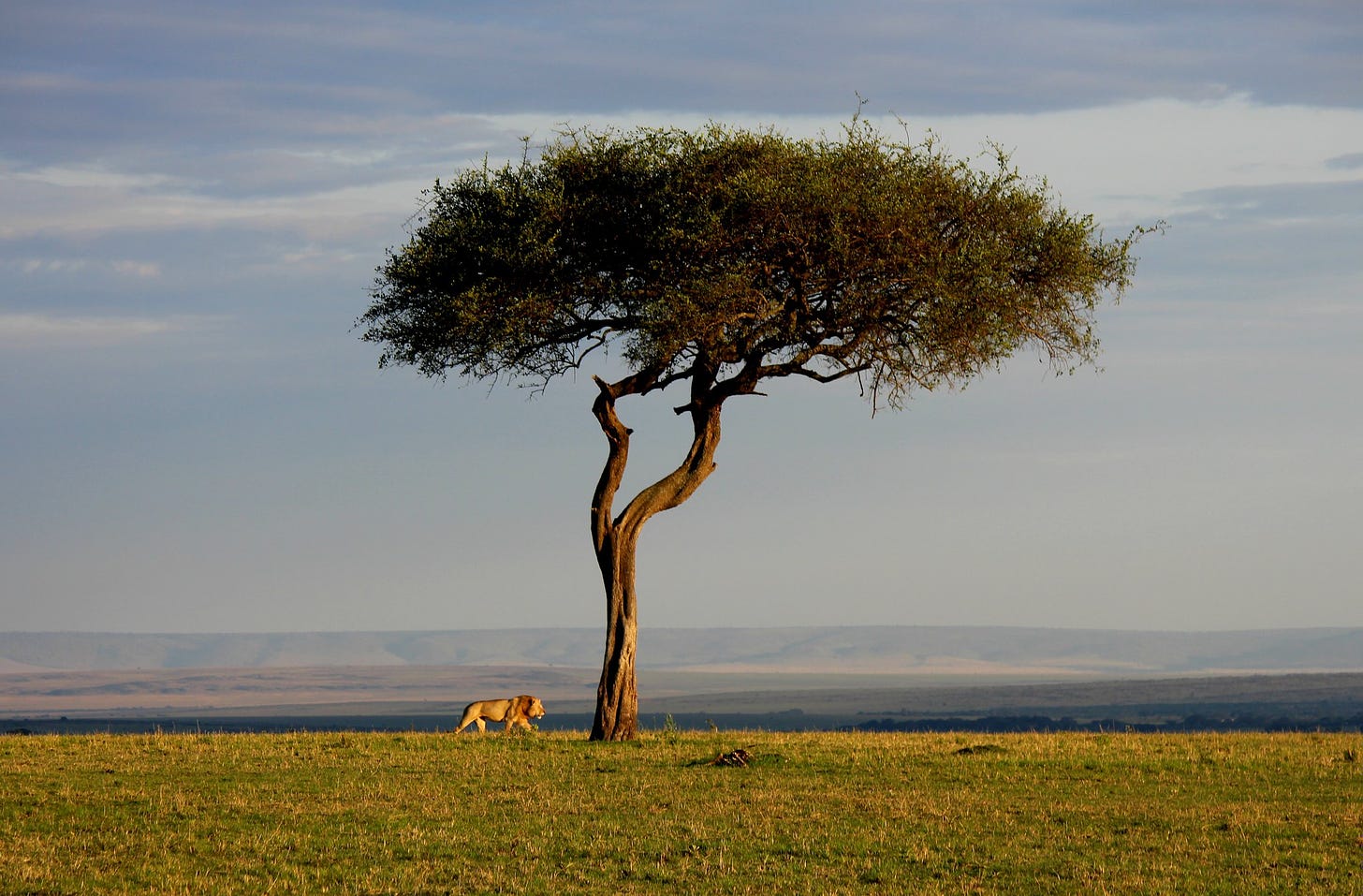
There’s a style of bonsai called “flat top,” which is fashioned after acacia trees that grow on African grasslands. Hallmarks of the style include a continuous flat or gently rounded canopy and an absence of low branches. Those would have been stripped by giraffes, of course!
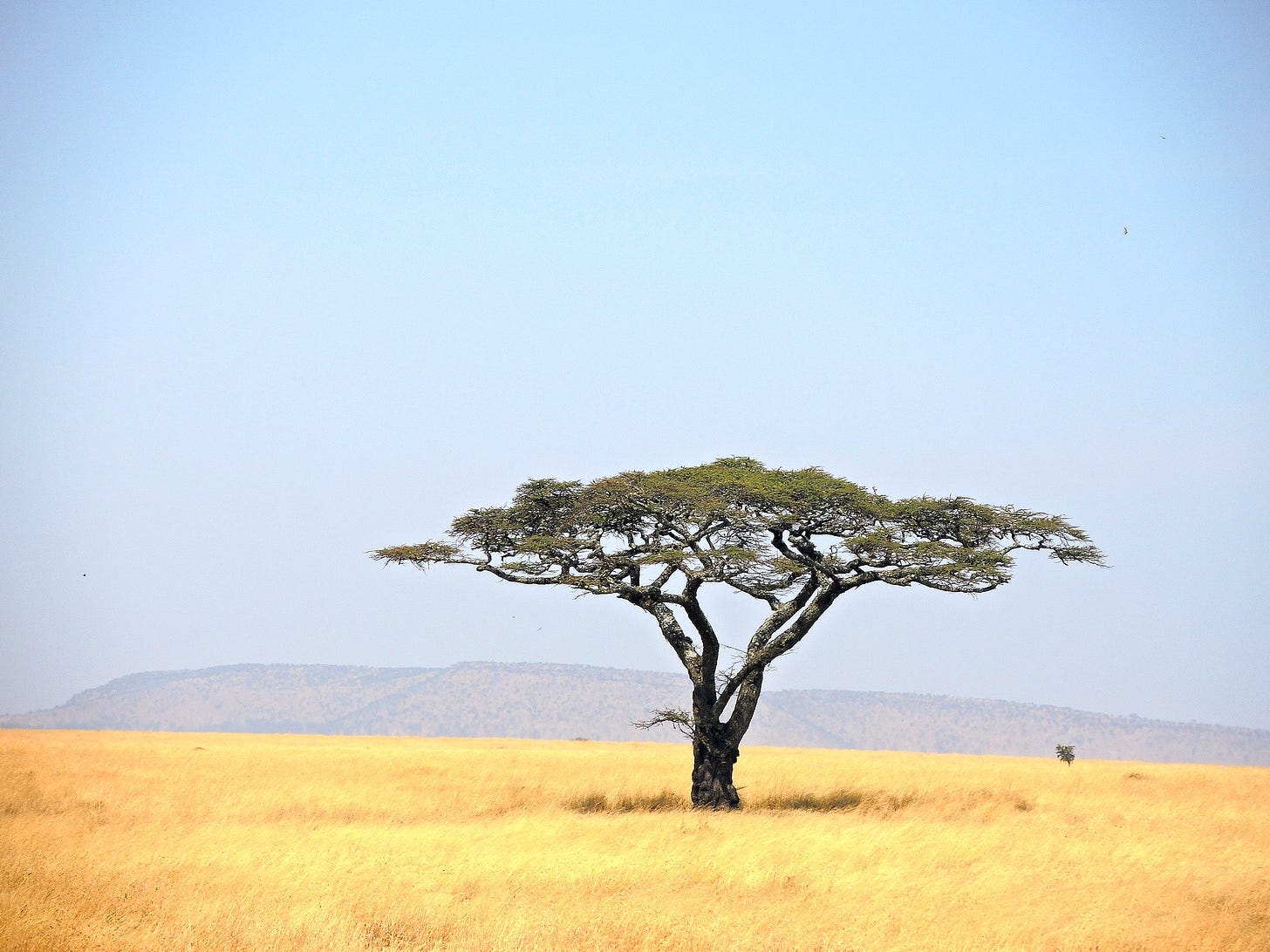
I’ve always appreciated a good flat top fade. If my hair were coarse or curly enough, I might give it a try. Well, maybe my portulacaria can go where I can’t. It’s a South African shrub, after all, one that grows under similar conditions to the acacia. A stylistic switch would address both of my concerns with this tree. Flat top bonsai naturally lack low branches, and with selective pruning I can flatten out my canopy while spreading it horizontally. No more risk of a bulge.
Okay, I realize it doesn’t look like much yet. I left the two low side branches alone so they can continue to thicken up, even if they appear leggy in the meantime.
You can see the cuts more easily from the top.
Yes, it’s lopsided. For now. It’s a fresh cut, it’ll grow in! This pruning was an impulsive decision, but I think I made the right move.
I’m enjoying the view from this perspective. I can see the bones of a future spreading canopy, and can imagine tiny giraffes craning their necks up to graze on the leaves.
Will it work out in the long term? Only patient daily observation will tell. I’ll inspect the tree from all angles when watering and take note of where new shots form. I look forward to this kind of drudge work, and to the kind of knowledge it brings. You may not need long to understand a thing, but it takes time to really know a thing.
Tree reading
A photographer’s portraits of New York City’s community gardeners. [Gothamist]
Speaking of community gardens, did you know Rudy Giuliani hated them, and did all he could to sabotage them during his time as mayor? [Gothamist]



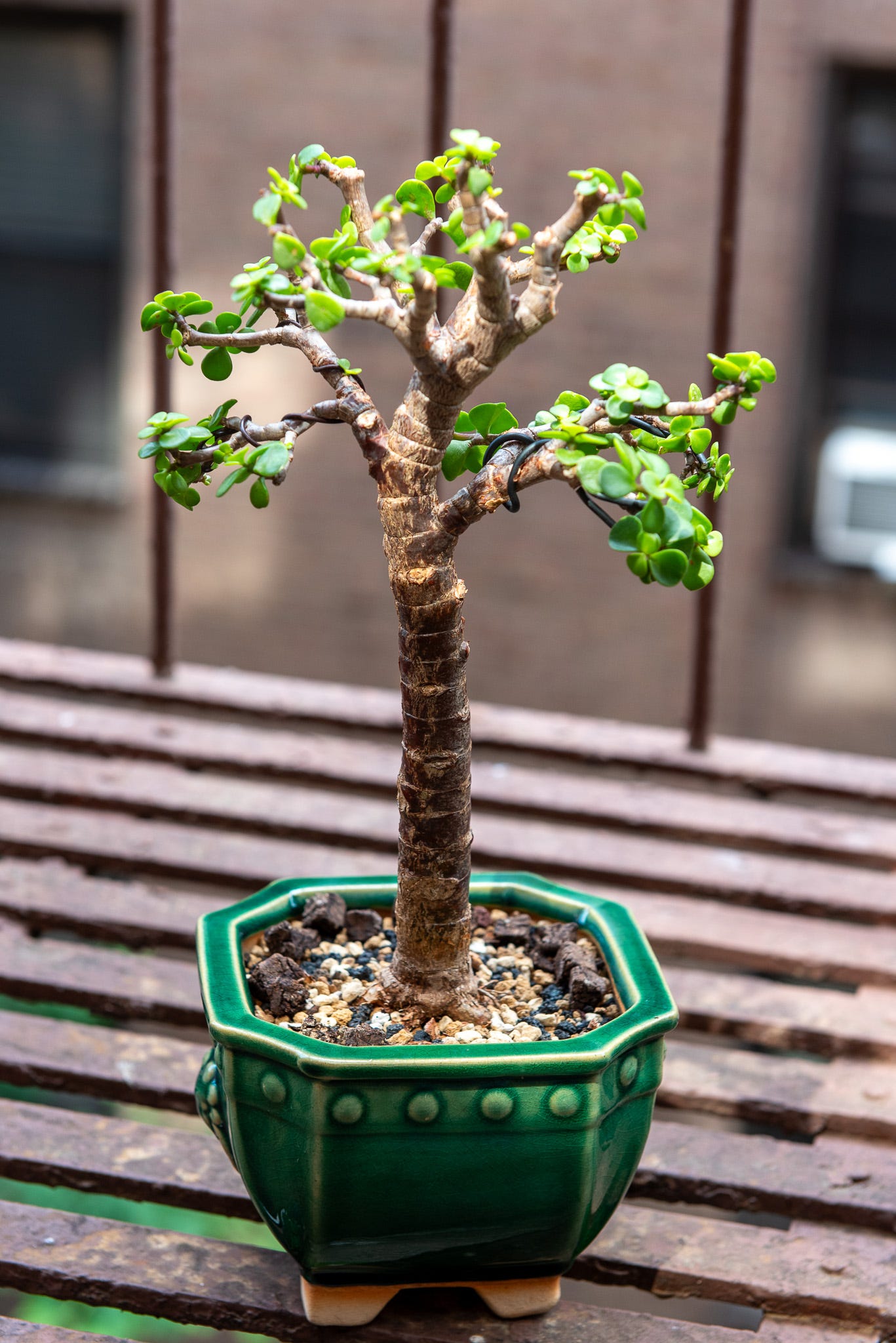
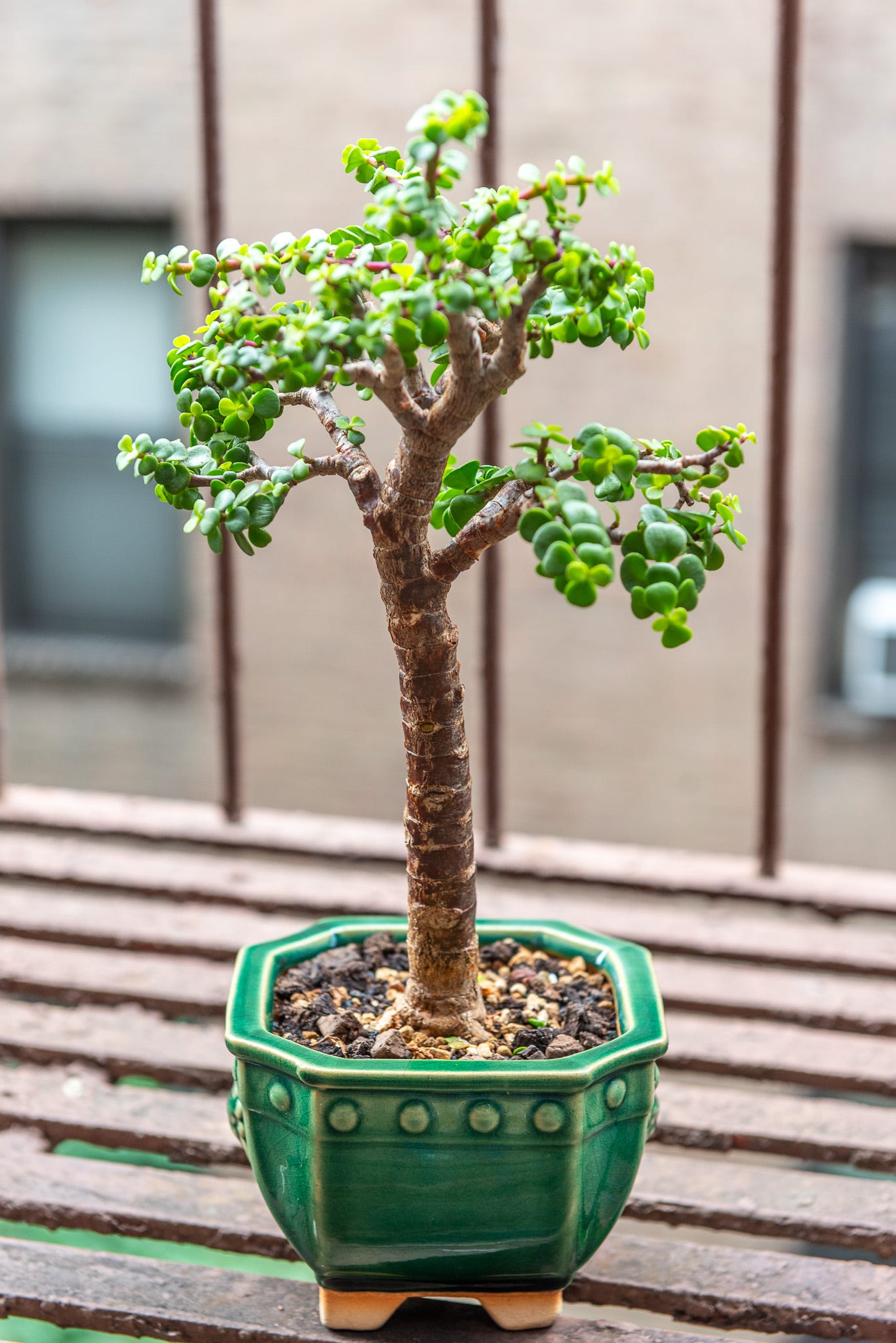
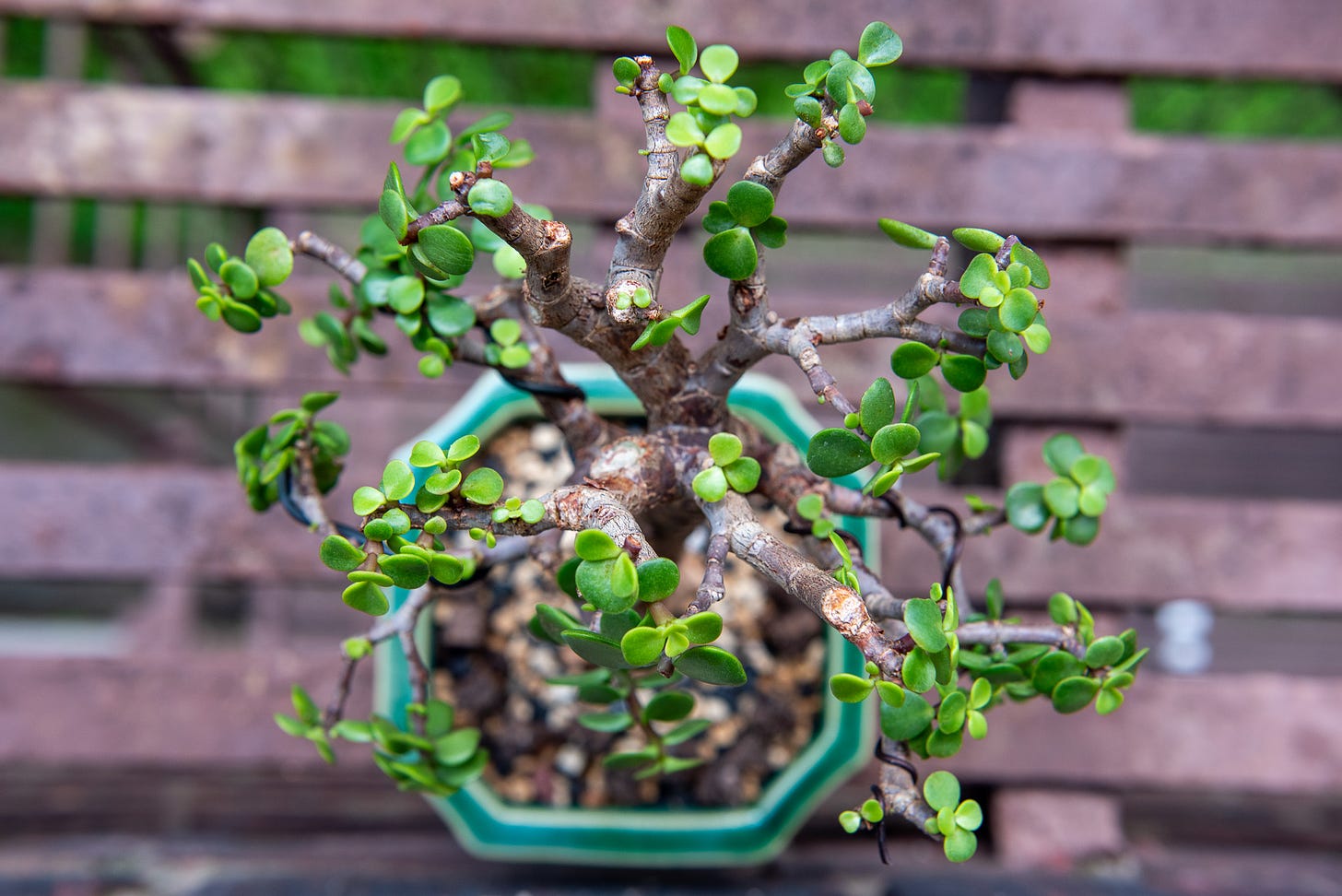
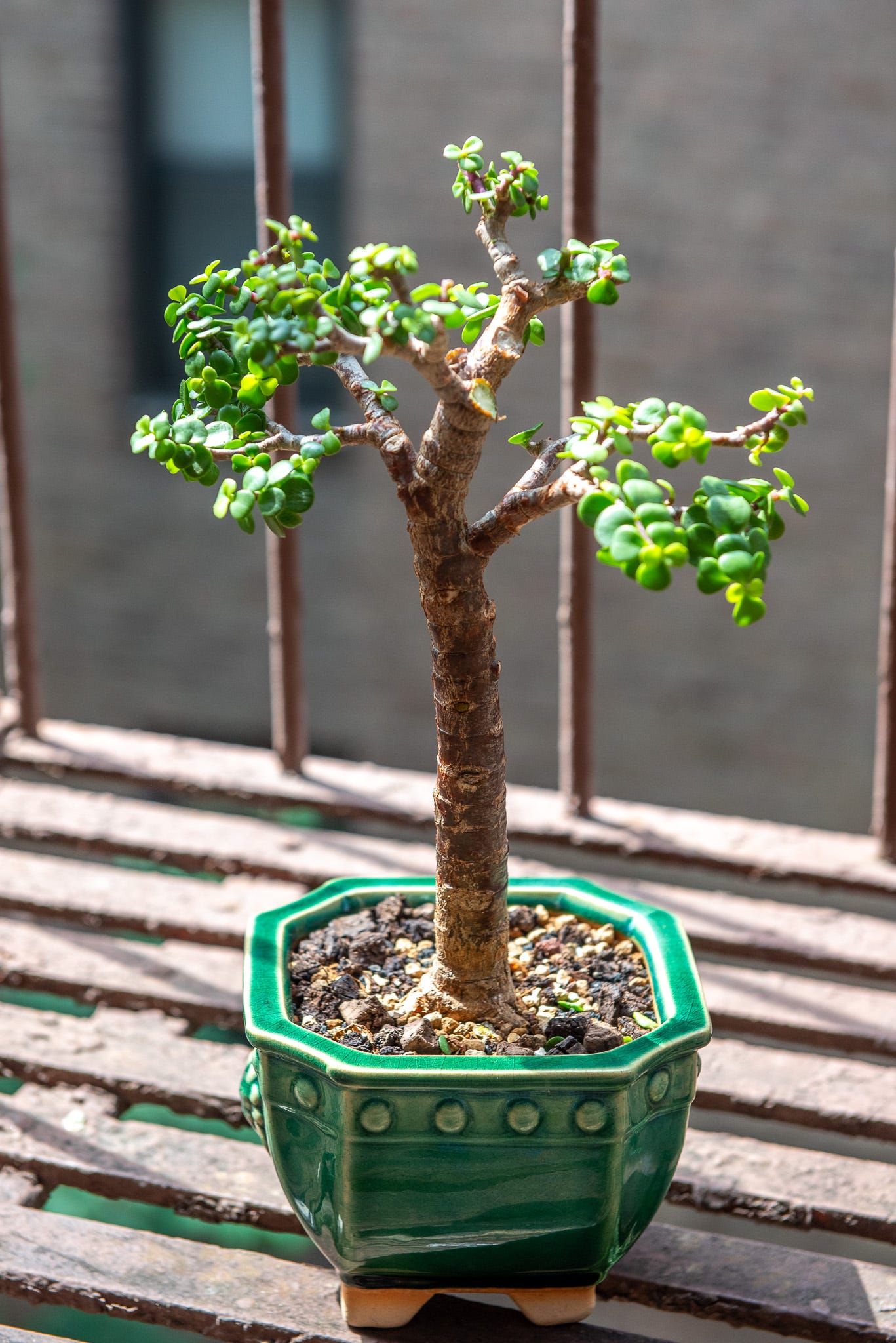
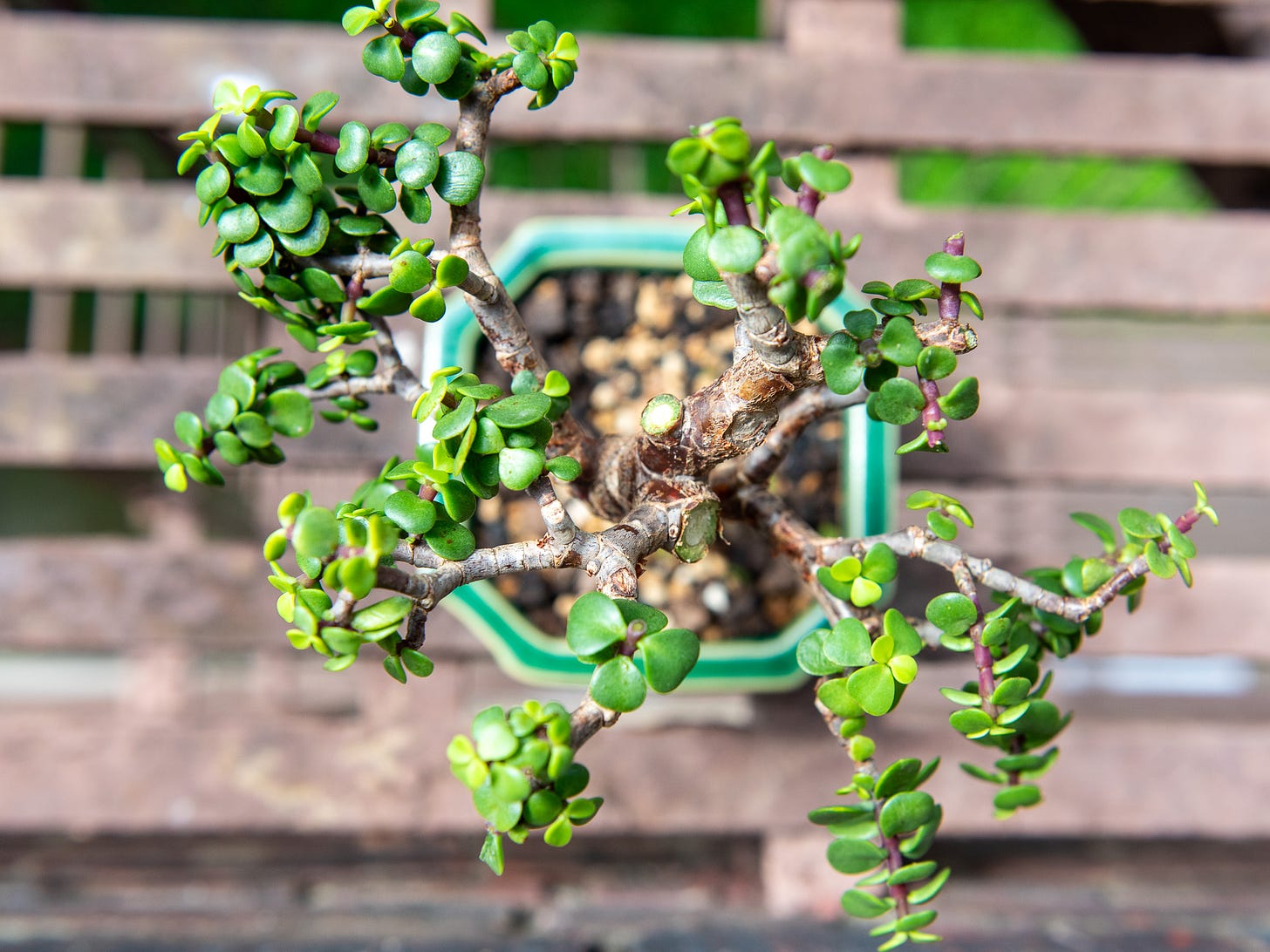
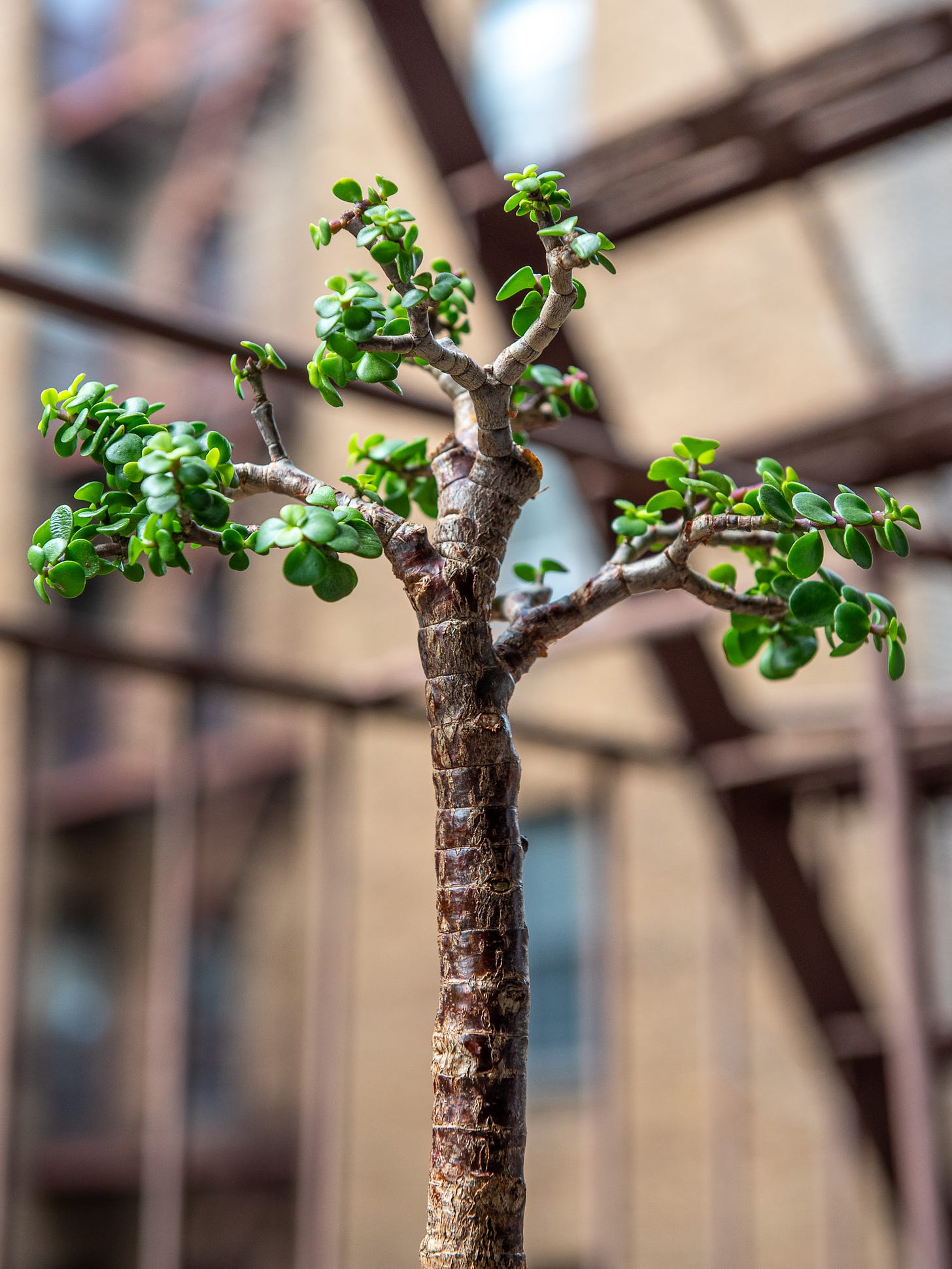
“ Well, maybe my portulacaria can go where I can’t.” ➕➕➕➕
I’ve been appreciating the new growth on my p. afra’s too. They’ve only been repotted for 6-8 weeks, so not as advanced or in need of a trim like yours. But one thing I love about this species is that new growth is very obvious, and relatively easy to foster. Definitely requires patience before you notice it though!